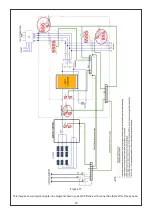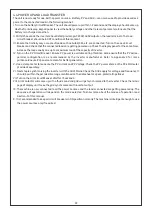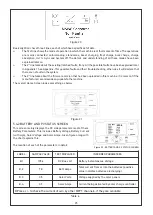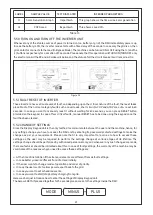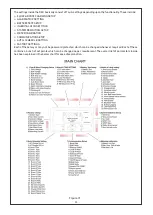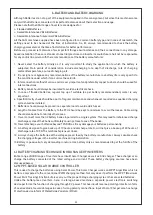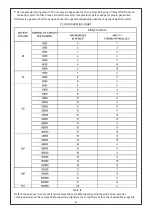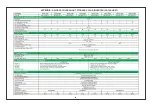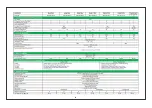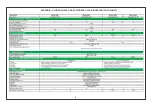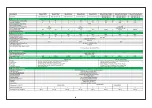
34
6.6 THREE STAGE CHARGING (FLOAT, BULK AND EQUALIZE)
To ensure long life of the battery and getting required back up from the battery, it is very important that we take
care of battery charging procedure exactly as recommended by the battery manufacturer. Every battery
manufacturer defines 3 levels of voltages to be imposed on battery bank during the battery charging process.
Depending upon the state of Charge of the battery, the charger voltage changes from Float to Bulk or vice versa
to ensure that proper charge has been replenished into the battery. Please refer the battery charging graph
provided below for more details any particular battery manufacturer in particular. To follow the exact battery
charging procedure, contact your battery manufacturer and make the changes accordingly.
6.7 TEMPERATURE COMPENSATION FOR VRLA
VRLA batteries are very temperature sensitive and in case the ambient or battery temperature drifts beyond a
particular range of temperature, it requires the charging voltage to change accordingly. This is known as battery
compensation feature under which, PCU must change its charging voltage as per battery temperature. The
battery temperature is an external parameter which has to be supplied to the PCU as an input. Proper battery
sensor terminals are provided in every PCU, and the battery sensor can be connected to this point, and the
Battery Compensation feature needs to be enabled from the DKU by accessing the settings. The default mode of
Battery compensation is OFF in all the machines supplied. The rating of the battery sensor can be known by
contacting the manufacturer.
6.8 BOOST CYCLE ON START UP
Whenever any Hybrid PCU is started from completely OFF position, it assumes that the battery is not in fully
charged condition and hence, performs a Boost Charging Cycle once. This process may take 3-4 hours
depending upon the battery capacity and its state of charge. This feature is very important for the long life of
battery as the machine does not know about the prior state of Battery. To avoid this again and again, it is
recommended not to turn of the unit completely until it is really required.
6.9 BATTERY OVER VOLTAGE PROTECTION
All hybrid PCUs are very sensitive against over charging the battery bank, and special algorithms have been
implemented in their controllers to avoid such a situation. As soon as the battery voltage reaches the pre-
determined value, the charger backs off under electronic protection and in case the situation persists, there is
an immediate shut down of the entire unit, considering the critical nature of the fault. This fault requires a
manual reset after it has been ensured that the fault condition has been cleared.
6.10 BATTERY UNDER VOLTAGE PROTECTION
Battery under voltage protection is the most critical protection in any inverter as it prevents drainage of battery
energy beyond a certain point. Hence, all hybrid inverters have an electronic shut down once this voltage is
achieved. Battery undercut means there will be a blackout at site if grid/ DG is not available. To avoid this, there is
a battery undercut PRE-ALARM which is an audio buzzer indicating the user that the black condition will arrive
very soon.
Once the battery undercut protection is activated, inverter will remain in this condition until the battery has been
revived up to a certain level. There is a hysteresis between the battery undercut voltage and the battery
reconnects voltage.
As soon as any of the power sources is available such as PV/ Grid/ DG, the battery charging will start
automatically and does not require any manual reset.
User is recommended not to change the battery undercut settings without consulting the battery manufacturer
and inverter manufacturer as both the equipments are designed only for a certain level of battery under voltage.
GRID CHARGER START/ STOP SETTING
Grid charger Start/ Stop settings allow the user to use the Grid supply selectively. This is one of the most critical
setting points in case you want to modify the MODE OF OPERATION in any hybrid inverter. These set points allow
the user to select the battery voltages at which the Grid should be bypassed to the loads and charge the
batteries at the same time. Please note that Grid Charger Start/ Stop settings have nothing to do with the Grid
voltage Range.
6.11 BATTERY CHARGING CURVE EXPLANATION
Note: For explanation on Battery Charging Curve, refer to our web manual.

